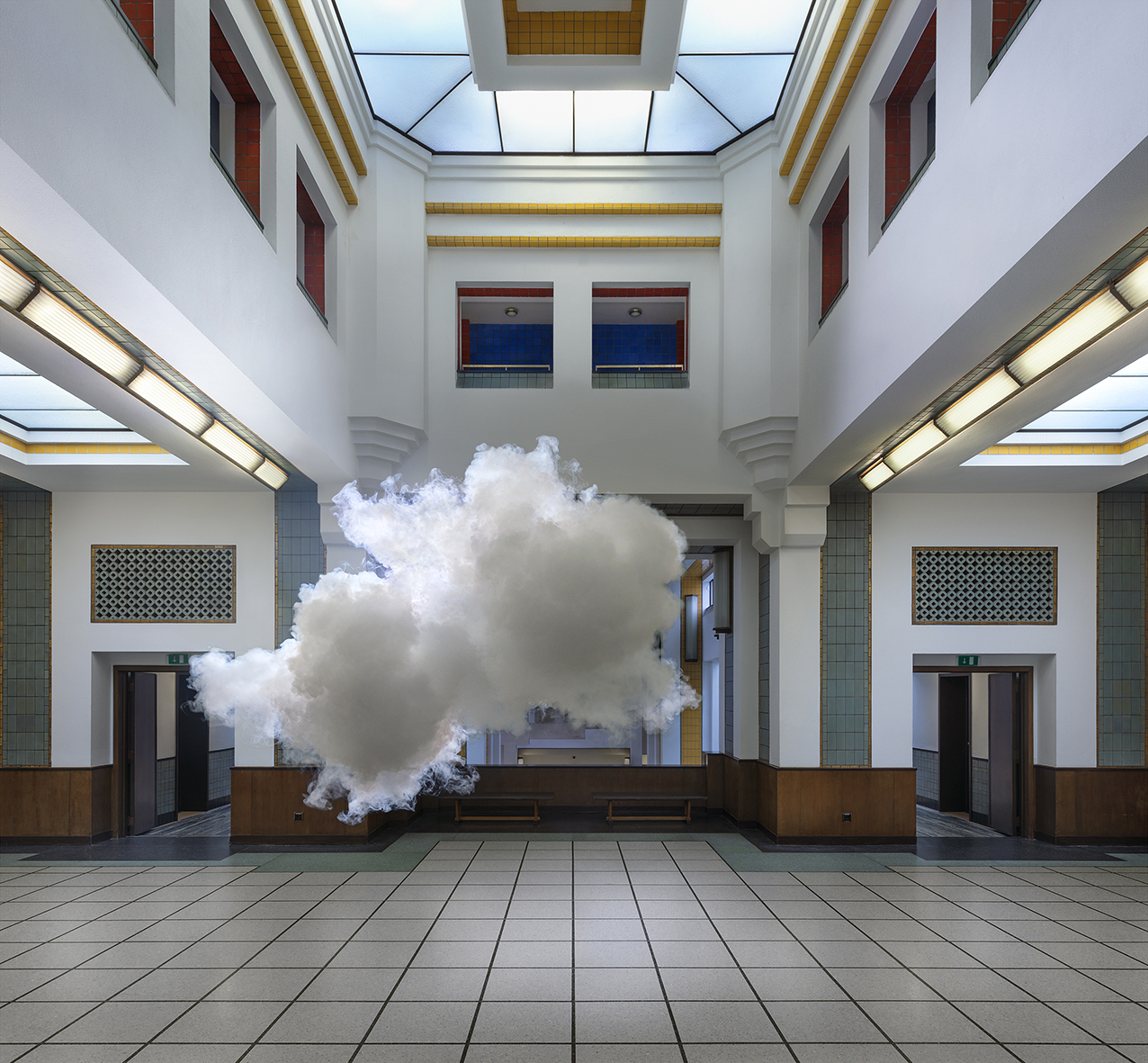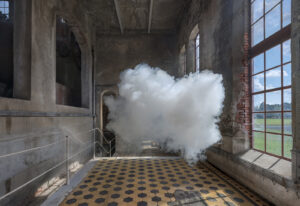“NIMBUS”, BERNDNAUT SMILDE (NL)

Títle of the artwork: Nimbus
Author: Berndnaut Smilde
Date: 2007-2008 approx.
Source:
https://www.berndnaut.nl/works/nimbus/
ARTWORK ABSTRACT
According to his fine art school biography, he painted for a few years before being drawn to the tactile world of sculpture until one day he wondered if he could sculpt a cloud… “I’m not interested in trying to create something that lasts forever,” he says.
The art he creates dissipates and disappears, so each piece is anchored to a time and a place. For him, that means there is always more art to create and a new place to go. Smilde wants to take his clouds and prisms (rainbow generators) to many more places around the world so that he can observe any landscape in a new way.
GET INSPIRED
Inspiration is everywhere, Smilde gives us some clues: “There are a lot of cultural references and ideas about weather phenomena like clouds,” he says. “People make up stories about them and interpret them in their own way.” On the other hand, we live in an age where aesthetics prevails in any field and for many “the impossible must be done to surprise and fascinate the public”, and, nowadays, it is clear that this is achieved through research and the help of new technologies because after all, who wouldn’t want to have a cloud in their living room?
WHAT DOES THIS WORK TRANSMIT TO US?
What materials / media are used in the work and why?
Created using a technique that mixes smoke, vapor, hydrogen and humidity in interior spaces, their magic lies in how real their clouds seem, which must be photographed during their fleeting existence in a totally controlled environment in which there is no room for the spectator, since his presence could alter the conditions of the room and ruin the result. For this reason, these works can only be enjoyed through the photographs that act as an archive and a record of the work. The cloud lasts only a few minutes and depends on the skill and professionalism to achieve these surreal scenarios. In them, “real” clouds appear, suspended in the center of different empty spaces, where Smilde combines reality with the fictitious by transporting a strange element to an everyday, recognizable and consecrated space.
Smilde can take hundreds of different shots to achieve the desired result. The clouds are at the same time very simple and infinitely complex. Each is a mass of microscopic water droplets condensed from air so humid that it can no longer contain liquid. The water vapor then condenses whatever particles it finds – a speck of dust, a floating organic molecule or a splash of black carbon – to form the fluffy blobs or wispy tangles we see in the sky.
What is the significance of the elements of the work?
In the past, the most realistic representation of a cloud was found in paintings, the same perhaps that have inspired the Dutch artist. But he goes beyond the pictorial method and goes so far as to execute a real and suggestive physical form. He wants to transfer nature, specifically meteorological phenomena, to the interior of enclosed and familiar spaces, such as workplaces, museums and exhibition halls, icons of ancient and contemporary architecture.
The possibility of replicating natural phenomena has always been the subject of study, but only in recent decades has this sector achieved considerable goals. In addition to Smilde’s work, one need only think of the Cloud Seeding technique, widely used in China since the early years of the new millennium.
In this case, Smilde has managed to impose himself on the natural elements by reproducing clouds in enclosed spaces, creating a dreamlike imaginary, on the limits of surrealism, but of the most concrete kind. He places parts of the natural world in unexpected positions and lets this juxtaposition provoke strange sensations in observers to the point of surprising and stimulating the curiosity of the public and experts on the subject.
The artist takes into account all the elements that make up the photograph, such as the shape and consistency of the clouds and the selection of space, to achieve a visually spectacular and, at the same time, disturbing final product. The snapshots convey contrasting emotions that communicate freedom and lightness, but they are always constrained within the walls, stones or windows of an architectural installation. The visual oxymoron of the cloud sequestered in an interior space triggers reverie and transforms the adult into a child.
In relation to what has come to be known as “meteorological art” the celebrated Danish artist Ólafur Elíasson often uses elemental materials such as light, water and fog for his works, achieving surprising visual effects. An example is the acclaimed installation “The Weather Project”, a total immersion in sunlight that was exhibited in 2003 at the Tate Modern, or his 2011 “Your Rainbow Panorama”, which consisted of a circular structure arranged on the roof of the ARoS Art Museum in Denmark that could be walked along the 150-meter perimeter and in which visitors could immerse themselves in a rainbow, while enjoying a breathtaking view of the city of Aarhus.
About the artist
Berndnaut Smilde (Groningen, The Netherlands, 1978), his work is developed in different media (installation, sculpture and photography). He began his studies at the Minerva Art Academy and later completed a Master of Arts at the Frank Mohr Institute in Groningen. He lives and works in Amsterdam. He deals with themes related to the physical realm of materials, space and light, and shows a certain duality playing with the boundaries between reality and fiction.
Author of the analysis: Carmen Salazar Pera


